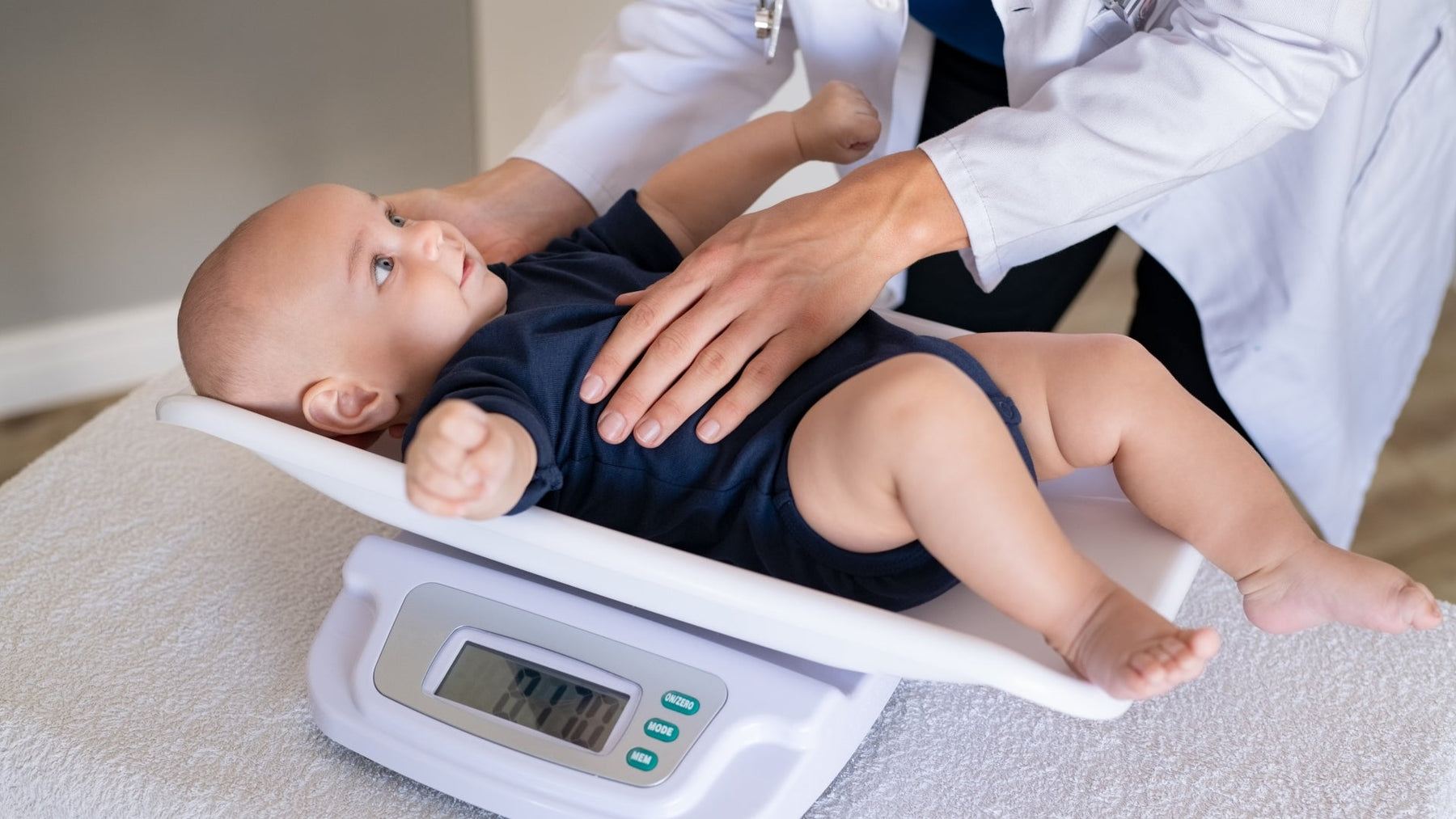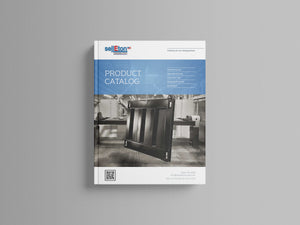
Infant Scale: Complete Guide to Baby Weight Monitoring Equipment
Accurate weight monitoring is crucial for your baby’s health and development, especially during those critical first months of life. Whether you’re a new parent tracking your newborn’s growth at home or a healthcare professional ensuring precise measurements in a clinical setting, having the right infant scale makes all the difference.
Unlike regular bathroom scales designed for adults, infant scales require specialized features to safely and accurately weigh babies who cannot stand or sit unassisted. These medical-grade devices provide the precision needed to detect even small changes in weight that could indicate feeding issues, growth concerns, or overall health problems.
In this comprehensive guide, we’ll explore everything you need to know about infant scales, from understanding the different types available to choosing the perfect model for your specific needs. You’ll learn about essential safety features, proper weighing techniques, and why regular weight monitoring is so important for your child’s wellbeing.
What is an Infant Scale
An infant scale is a specialized weighing device designed specifically for babies and toddlers up to 44 pounds. These scales feature a curved tray design that safely cradles your baby during weighing, ensuring both comfort and security throughout the measurement process.
The primary purpose of infant scales extends far beyond simple curiosity about your baby’s weight. These devices serve as essential tools for tracking your baby’s growth patterns, monitoring overall health, and conducting medical assessments that can detect potential issues early. Healthcare providers rely on accurate weight measurements to evaluate feeding efficiency, medication dosing, and development milestones.
What sets infant scales apart from regular bathroom scales is their specialized design and enhanced precision. The curved tray prevents babies from rolling off during weighing, while the higher precision capabilities can detect changes as small as 0.1 ounces. This level of accuracy is crucial because babies can experience significant health implications from even minor weight fluctuations.
You’ll find infant scales used extensively in hospitals, pediatric clinics, birthing centers, and increasingly in homes where parents want to maintain regular monitoring between doctor visits. The scales are particularly valuable for premature babies, children with feeding difficulties, or any situation where precise weight tracking is medically necessary.
Types of Infant Scales
Digital Infant Scales
Digital infant scales represent the most popular choice among both healthcare professionals and parents due to their advanced features and user-friendly operation. These electronic scales feature LCD displays that show weight readings in multiple units, including pounds and ounces, kilograms, and grams, making it easy to work with different measurement systems.
Advanced models like the Detecto 8440 and Health o meter 549KL offer exceptional 0.1 oz precision, which means they can detect weight changes as small as a few grams. This level of accuracy is essential for monitoring newborns, where even small weight variations can have significant clinical implications.
Digital scales come equipped with several convenient features that make weighing active babies much easier. The tare function allows you to subtract the weight of blankets or clothing, ensuring you get accurate readings even when your baby needs to stay warm during weighing. The hold function is particularly valuable for squirmy babies, as it captures and displays the weight reading even when your child is moving around on the scale.
Most digital infant scales offer both battery and AC power options, providing flexibility for different use environments. Battery operation makes the scales portable for home visits or travel, while AC power ensures consistent performance in clinical settings where the scales are used frequently throughout the day.
Mechanical Infant Scales
Mechanical infant scales, such as the traditional beam-style models like the Detecto 337 and Health o meter 386S, provide reliable analog readings without requiring any electronic components. These scales operate on fundamental physics principles, using counterweights and balance mechanisms to determine weight accurately.
The primary advantage of mechanical scales lies in their independence from power sources, making them ideal for areas without reliable electricity or in emergency situations. Rural clinics, international aid settings, and backup medical equipment scenarios often rely on mechanical scales for their durability and simplicity.
These scales typically feature robust construction that can withstand heavy use and harsh conditions. The absence of electronic components means fewer potential failure points, and calibration is often straightforward using standard weights. Many healthcare facilities keep mechanical scales as backup systems to ensure they can always provide accurate weight measurements regardless of power availability.
While mechanical scales may lack some of the advanced features found in digital models, they offer excellent reliability and require minimal maintenance. The analog displays are easy to read, and the scales can provide years of dependable service with proper care and occasional calibration.
Wireless Smart Scales
The newest category of infant scales includes Bluetooth-enabled devices that sync with smartphone apps like Baby Tracker and Growth Chart applications. These smart scales represent the cutting edge of baby weight monitoring technology, combining traditional weighing accuracy with modern data management capabilities.
Popular models include the Withings Smart Kid Scale and Greater Goods baby scale, which automatically log weight data and track growth milestone progress over time. The wireless connectivity eliminates the need for manual record-keeping, reducing the chance of errors and ensuring you never lose important growth data.
Smart scales often include cloud storage features that allow you to share growth charts and weight trends directly with your pediatrician during visits. This seamless data sharing can help healthcare providers identify patterns or concerns more quickly, leading to better care for your child.
The accompanying smartphone apps typically provide additional features such as growth percentile calculations, feeding reminders, and milestone tracking. Some apps can even generate professional-looking reports that you can print or email to family members or healthcare providers.
Essential Features for Infant Scales
Safety and Comfort Features
When selecting an infant scale, safety should be your top priority. Look for models with removable, washable weighing trays that feature raised edges to prevent your baby from rolling off during the weighing process. The tray surface should be smooth and made from BPA-free materials that are gentle on your baby’s delicate skin.
A non-slip base is essential to ensure the scale remains stable during use, even when your baby moves around. The platform design should be wide enough to provide a secure foundation, and the overall construction should feel solid and well-balanced when placed on various surfaces.
Rounded corners throughout the scale design help prevent injuries from accidental contact, while safety locks on digital models prevent accidental operation that could lead to incorrect readings or reset calibration settings. These features become particularly important in busy household or clinical environments where multiple people may interact with the equipment.
The weighing surface should be easy to clean and disinfect, especially important in medical settings or when multiple babies use the same scale. Look for scales with smooth surfaces that don’t have crevices where bacteria could accumulate.
Accuracy and Precision
Medical-grade accuracy is non-negotiable when it comes to infant scales. Look for models that offer weight capacity ranging from birth measurements up to 44 pounds, with precision capabilities of 0.1 oz (approximately 2-5 grams). This level of precision ensures you can detect even subtle changes in your baby’s weight that might indicate feeding issues or health concerns.
Stabilization technology is crucial for obtaining accurate measurements from active babies who tend to move during weighing. Advanced scales use algorithms to filter out movement-related weight fluctuations and provide stable readings even when your child is squirming or kicking.
Auto-zero and calibration functions help maintain consistent readings over time. The auto-zero feature ensures the scale starts from a true zero point before each weighing, while automatic calibration maintains accuracy without requiring manual intervention. Look for scales that meet FDA Class III standards, which indicate they meet medical-grade accuracy requirements suitable for clinical use.
Many professional-grade scales include features like averaging multiple readings automatically, which can improve accuracy when weighing particularly active babies. This technology takes several quick measurements and calculates an average, providing more reliable results than single-point measurements.
Importance of Regular Infant Weight Monitoring
Regular weight monitoring serves as one of the most important indicators of your baby’s overall health and development. During the first few months of life, babies typically gain 5-7 ounces per week, and tracking this progress helps identify potential feeding issues, failure to thrive, or other health concerns before they become serious problems.
Early detection capabilities make infant scales invaluable tools for both parents and healthcare providers. Sudden changes in weight gain patterns can indicate problems with breastfeeding technique, formula tolerance, or underlying medical conditions that require prompt attention. By monitoring weight regularly, you can catch these issues early when interventions are most effective.
Preterm babies require particularly careful weight monitoring, as they face unique challenges in achieving healthy growth patterns. These vulnerable infants may need daily or even twice-daily weight checks to ensure they’re receiving adequate nutrition and developing properly. Accurate scales enable healthcare providers to make precise adjustments to feeding schedules and nutritional support.
For breastfeeding mothers, infant scales provide valuable feedback about feeding success. By weighing your baby before and after nursing sessions, you can measure exactly how much breast milk your child consumed. This information helps identify feeding efficiency problems and provides reassurance that your baby is getting adequate nutrition.
Documentation requirements for pediatric visits and insurance coverage often require regular weight measurements. Having accurate, consistent data from home monitoring can supplement clinical visits and provide healthcare providers with a more complete picture of your child’s growth patterns. This comprehensive data helps ensure your baby receives appropriate care and meets important developmental milestones.
How to Use an Infant Scale Properly
Setup and Calibration
Proper setup begins with choosing the right location for your infant scale. Place the device on a flat, hard surface away from air currents, vibrations, or other environmental factors that could affect accuracy. Avoid locations near heating vents, air conditioning units, or high-traffic areas where people walking by might cause vibrations.
Digital scales require a warm-up period of 15-20 minutes before first use to ensure the electronic components reach stable operating temperature. This step is particularly important in clinical settings where scales may be turned on and off frequently throughout the day.
Weekly calibration using known weights or the auto-calibration function helps maintain accuracy over time. Many scales include built-in calibration weights or provide instructions for using standard weights to verify accuracy. Follow the manufacturer’s specific calibration procedures, as these can vary between different models and brands.
Always zero the scale before each weighing session, even if it appears to read zero initially. Environmental factors like temperature changes or minor vibrations can cause drift in the baseline reading, and proper zeroing ensures you start from a true reference point.
Weighing Technique
Consistency in your weighing technique produces the most reliable results for tracking your baby’s growth over time. Weigh your baby at the same time of day whenever possible, preferably before feeding when their stomach is empty. This timing reduces variability caused by different amounts of food or liquid in their system.
Remove your baby’s diaper and clothing to get the most accurate measurement possible. If you need to keep your baby warm with a blanket, use the tare function to subtract the blanket’s weight before placing your child on the scale. Record the blanket weight separately so you can account for it in future measurements.
Wait for the reading to stabilize completely before recording the weight. Most scales require 3-5 seconds to settle on a final reading, and rushing this process can lead to inaccurate measurements. Digital scales typically indicate when the reading is stable with a lock symbol or steady display.
For particularly active babies, consider taking multiple readings and calculating an average for the most accurate result. Many modern scales do this automatically, but you can also take several manual readings and compute the average yourself. This technique helps compensate for movement-related variations in the measurements.
Choosing the Right Infant Scale
For Medical Professionals
Healthcare environments require medical-grade scales that meet stringent accuracy and durability standards. Professional models like the Cardinal Detecto 8440 offer the 0.1 oz precision necessary for clinical decision-making, along with features designed for high-volume use in busy medical facilities.
EMR connectivity has become increasingly important in modern healthcare settings. Look for scales that can interface directly with electronic medical record systems, automatically transferring weight data and reducing transcription errors. This integration saves time for healthcare providers and ensures accurate record-keeping.
Multiple unit displays allow healthcare providers to work with different measurement systems depending on their specific needs or patient preferences. Scales should display weight in pounds and ounces, kilograms, and grams, with easy switching between units during operation.
Certification requirements include FDA approval and NTEP certification for legal-for-trade use in medical billing situations. These certifications ensure the scales meet rigorous accuracy standards and can be used for official medical documentation and insurance purposes.
Consider scales with integrated height measurement capabilities for complete growth assessment in one device. These combination units save space in clinical settings and ensure consistent measurement conditions for both weight and length tracking.
For Home Use
Consumer models designed for home use balance accuracy with affordability and user-friendly features. Popular options like the MyWeigh SCMBABYC or Greater Goods baby scale provide excellent accuracy for home monitoring while remaining within reasonable budget ranges of $50-200.
Budget considerations should factor in both initial purchase price and long-term value. While less expensive models may seem attractive, investing in a quality scale with good accuracy and durability often proves more economical over time. Look for scales with good warranty coverage and customer support.
Portability becomes important for families who travel frequently or have limited storage space. Lightweight, compact designs make it easy to take the scale with you or store it away when not in use. Battery operation adds to portability by eliminating the need for power outlets.
App connectivity for home scales can provide valuable features for busy parents. Automatic data logging eliminates the need for manual record-keeping, while smartphone apps can generate growth charts and reminders for regular weighing sessions. The ability to easily share data with your pediatrician can improve communication and care coordination.
Storage and space considerations are important in home environments where the scale may not be used daily. Look for models that fold or store compactly, and consider where you’ll keep the scale when not in use. Some families prefer to leave the scale set up permanently in the nursery, while others prefer portable models they can store away.
When selecting a scale for home use, read reviews from other parents to understand real-world performance and reliability. Pay attention to comments about accuracy, ease of use, and customer service experiences, as these factors can significantly impact your satisfaction with the purchase.
Regular infant weight monitoring plays a crucial role in ensuring your baby’s healthy development, and having the right scale makes this important task both accurate and convenient. Whether you’re a healthcare professional requiring medical-grade precision or a parent seeking reliable home monitoring, understanding the features and capabilities of different infant scales helps you make an informed decision.
The investment in a quality infant scale pays dividends in peace of mind and health monitoring capabilities. By choosing a scale that meets your specific needs and learning proper weighing techniques, you’ll have the tools necessary to track your baby’s growth accurately and detect any potential concerns early.
Remember to consult with your pediatrician about appropriate weighing schedules and growth expectations for your specific child. Regular communication with healthcare providers, combined with accurate home monitoring, creates the best environment for supporting your baby’s healthy development.

